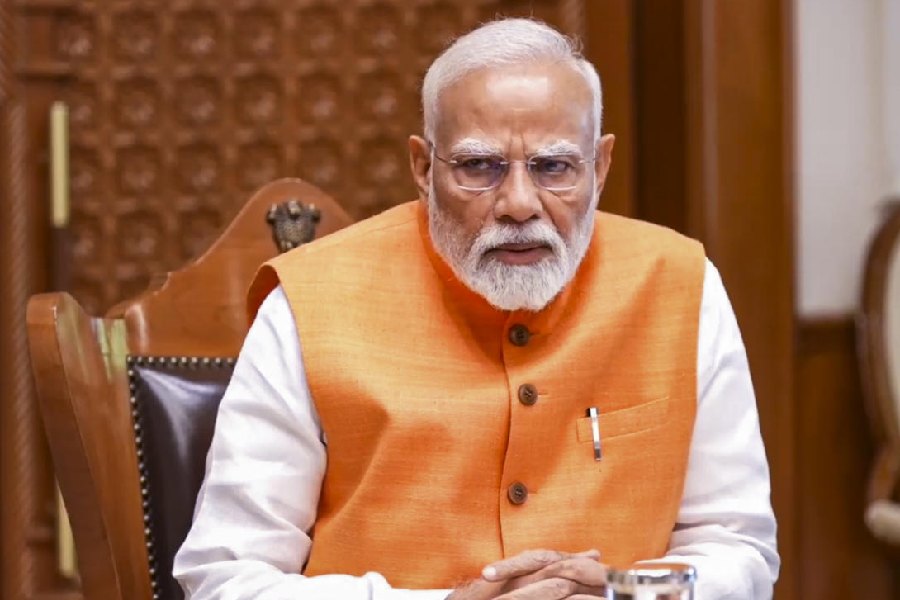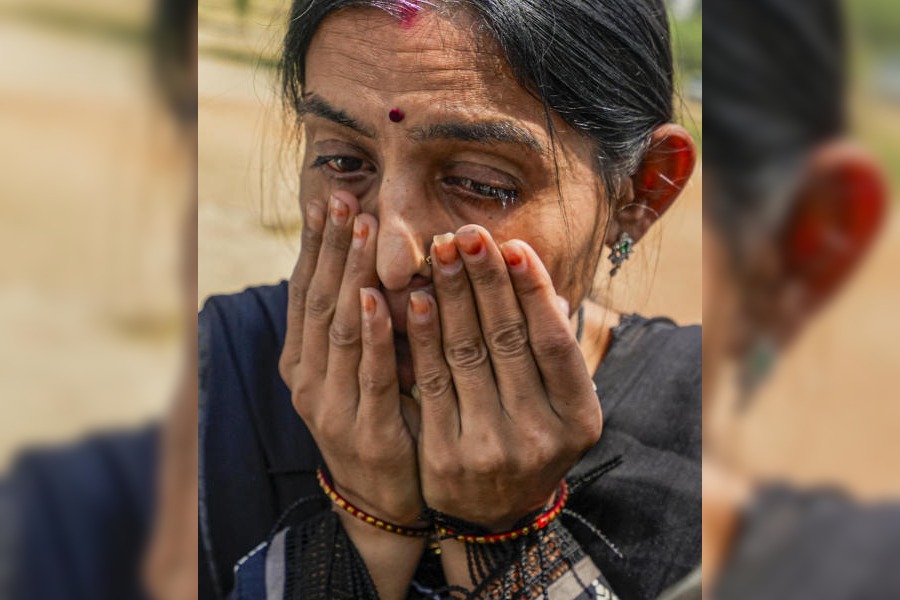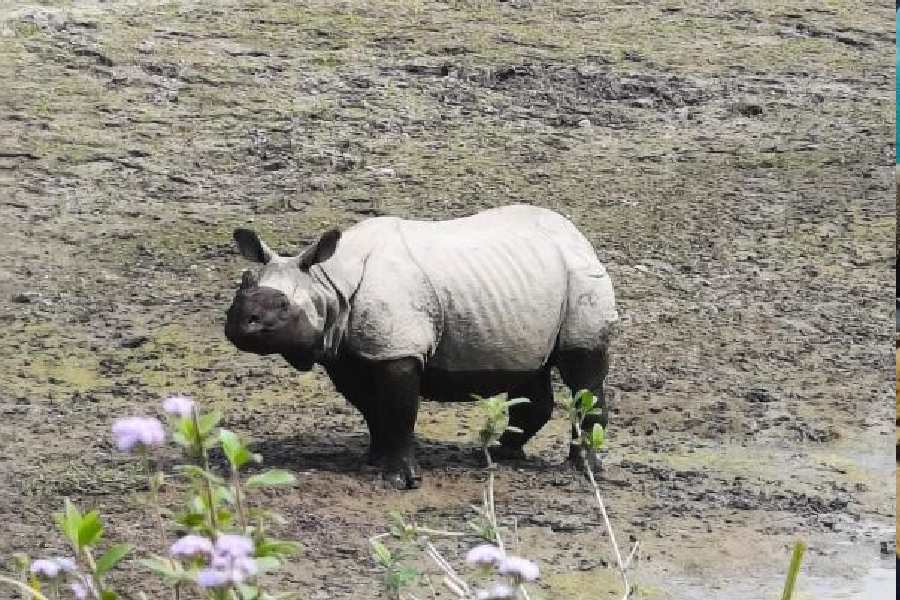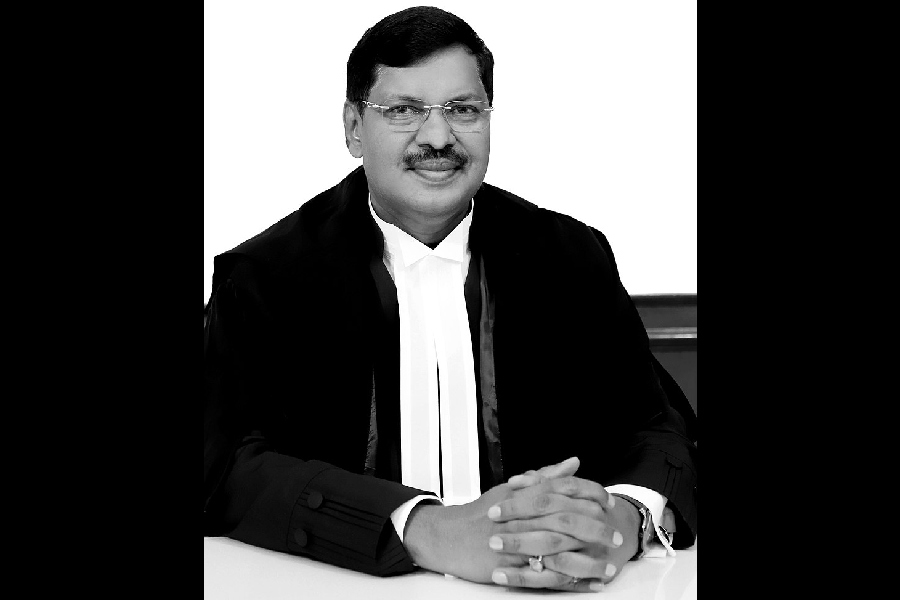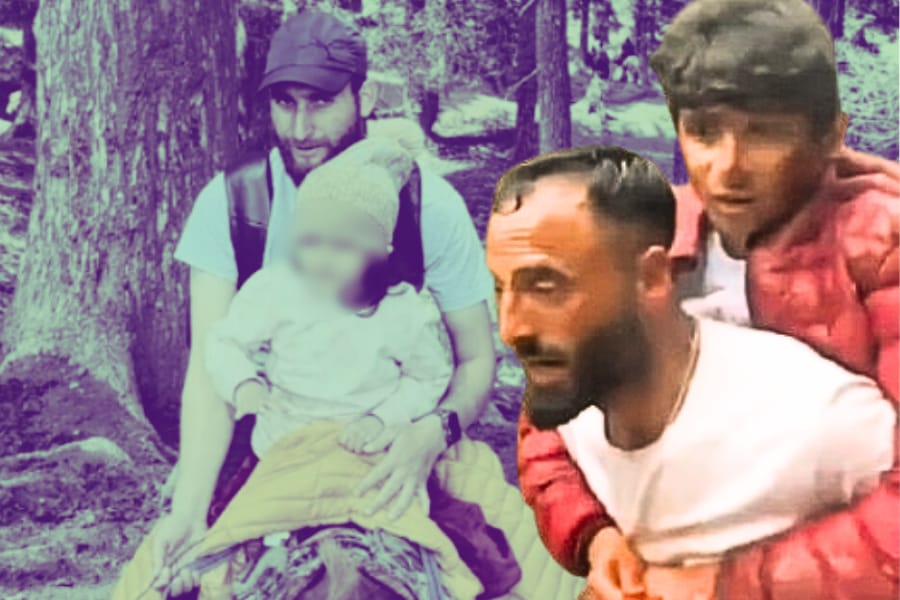
Picture by Bishwarup Dutta
April 23: Kailash Satyarthi had found his calling quite early in life.
The Nobel laureate, who received the P.C. Chandra Puraskaar on Sunday, spoke affably about his childhood in Vidisha, Madhya Pradesh, at a city hotel the previous evening. He was a little more than five and had just begun school. Outside the school, he would see a cobbler and his son, a little boy, who would help his father.
One day, Satyarthi, who was born Sharma but would change his surname to obliterate his caste, summoned up all his courage and asked the cobbler why he did not send his son to school. The surprised man said: " Babuji, humlog to kaam karne ke liye hi paida hote hai." They were born to serve others, father and son, and it was not for them to question the world order.
Satyarthi, who shared the Nobel peace prize with Malala Yousafzai from Pakistan for his campaign against child labour in India and abroad, would remember this incident. He studied engineering, specialising in transformer design and high-voltage engineering, and worked as an engineer for two years.
But at 26, in 1980, the follower of Jayprakash Narayan gave up his job in Madhya Pradesh, went to Delhi and started a fortnightly magazine Sangharsh Jari Rahega. It was about the rights of the marginalised - women, children, indigenous populations - but then these phrases were unheard of and the human rights movement was in its nascent stage, says Satyarthi.
The going was tough. Then one day everything changed. A desperate man arrived at his office from Sirhind in Punjab, saying his daughter was being sold off to a brothel. He had heard of Satyarthi's magazine. As for himself, the visitor said, he was a "slave", brought 17 years ago from Aligarh with his wife and a few others to work at a brick kiln in Sirhind, and never allowed to leave the place. His daughter was born there. Now that she was growing up, the owners had decided to sell her to a brothel.
"That was the turning point," says Satyarthi. On an impulse, he drove to Sirhind in a truck with a few of his friends and the father, and eventually succeeded in rescuing the entire community from Aligarh which was living enslaved at the brick kiln. "There were 36 women, 14 adults, 22 children."
Since then, Satyarthi says, his organisation Bachpan Bachao Andolan, which he would start in 1981, has rescued 85,000 children from slavery. He has suffered several attacks on his person and lost two of his colleagues in his attempts to free the children.
Satyarthi's efforts played a crucial role in International Labour Organisation adopting Convention No. 182 on "the worst forms of child labour" in 1982.
One of his biggest battles, Satyarthi says, has been against perception. When he began work, there was no awareness that child labour was wrong. He claims there has been marked positive change since, worldwide and in India.
In 2000, 260 million children were found to be working; now the number has come down to 168 million. "In India, 12-13 years ago, the number was 12 million. Now it is 4.3 million," says Satyarthi.
Yet trafficking of children continues, both worldwide and in India, and the statistics remain alarming. Satyarthi feels that to address the problem effectively the government, the corporate sector and civil society should come together.
Pointed out that he has been criticised on several platforms as someone who has exploited the image of India in the West as a country still in need of a Western civilising mission, Satyarthi says that his work is based on the richest tradition of India.


